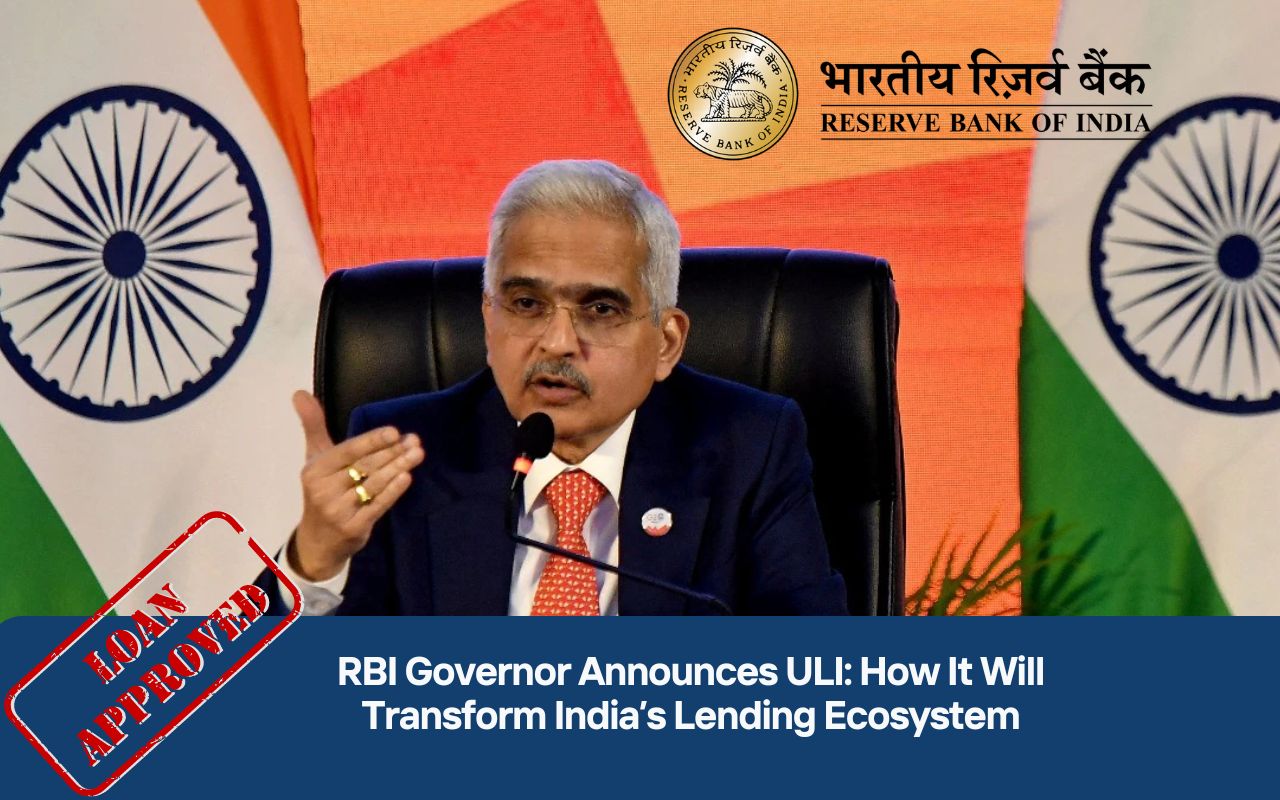

Piyush Patel
Associate Product Manager
The recent announcement by the Reserve Bank of India (RBI) regarding the Unified Lending Interface (ULI) has generated significant excitement across the financial technology landscape. With the success of the Unified Payments Interface (UPI) as a backdrop, ULI is set to revolutionize India's lending ecosystem by addressing long-standing challenges, particularly in credit delivery to underserved sectors like MSMEs and rural borrowers.
In this blog, we’ll explore how ULI will reshape the financial future of India, its workings, and the transformative impact it will have on both borrowers and lenders alike.
ULI: A Vision for the Future of Lending
ULI is envisioned as a comprehensive digital public infrastructure that will streamline and accelerate the lending process, particularly for critical sectors such as agriculture and small and medium enterprises (SMEs). Its core goal is to consolidate disparate data streams and establish a seamless flow of information between borrowers and lenders. By eliminating the traditional bottlenecks in credit appraisal, ULI aims to make borrowing more accessible, efficient, and inclusive for all.
Why India Needs ULI: Closing the Lending Gap
India's current lending landscape is rife with inefficiencies. Borrowers—especially those from small businesses and rural areas—face the daunting task of compiling extensive documentation to prove their creditworthiness. These manual processes create friction and result in delayed credit access. ULI is positioned to bridge this gap by introducing a streamlined, automated, and data-driven lending ecosystem.
By simplifying loan applications and making it easier for financial institutions to reach underserved markets, ULI has the potential to unlock growth for millions of small businesses and entrepreneurs, significantly boosting India's economy.
Key Features of ULI
1. Consent-Based Data Aggregation
One of ULI's standout features is its consent-based data aggregation model. Borrowers will maintain control of their personal information, and ULI will pull in necessary data—such as Aadhaar e-KYC, PAN, land records, and account aggregator data—from verified sources. This aggregated financial profile will provide lenders with a comprehensive view of the borrower, thereby speeding up the credit approval process dramatically.
2. Open Architecture and Seamless Integration
ULI’s open architecture with plug-and-play integration allows financial institutions to onboard the platform with minimal technical complexity. This creates a robust lending ecosystem where banks, NBFCs, and fintech companies can participate without extensive modifications to their existing infrastructure.
ULI’s low-risk, high-reward model is particularly attractive for smaller financial institutions, encouraging them to adopt digital lending and drive financial inclusion.
3. Innovative and Flexible Underwriting Models
ULI also introduces more context-specific data into the underwriting process. For example, lenders providing agricultural loans can access data such as crop yields, while small retailers can have their sales data integrated into the credit evaluation process. This tailored underwriting approach opens doors for borrowers who may have struggled to obtain credit through traditional channels, giving them access to financial products suited to their specific needs.
The Benefits of ULI: Scaling Financial Inclusion
ULI will deliver immense benefits to India’s financial institutions, borrowers, and the overall economy. Here are some key advantages:
1. Expanded Access to Credit
By simplifying the loan application process and utilizing alternative data sources for credit scoring, ULI will bring millions of unbanked or underbanked individuals into the formal credit system. This move is critical for empowering rural entrepreneurs, small businesses, and marginalized communities.
2. Reduced Operational Costs for Lenders
ULI minimizes the time and resources spent on manual loan processing, reducing operational costs for lenders. By automating data collection and credit assessments, the platform also decreases the risk of human error and significantly increases the speed of loan approvals.
3. Personalized Financial Products
With better data, lenders can develop more tailored financial products. Whether it’s a microloan for a farmer or a short-term loan for an urban entrepreneur, ULI’s infrastructure ensures the right match between borrower and lender. Personalization will enable borrowers to access the credit products that best fit their financial needs.
Potential Challenges Ahead: Navigating Adoption
While ULI holds great promise, certain challenges will need to be addressed for the platform to reach its full potential:
1. Data Privacy and Security
With vast amounts of personal data flowing through the system, data privacy and security will be paramount. ULI will need to implement stringent measures to ensure that borrower data is protected and that the consent-based system is transparent and secure. Building trust among users will be critical to widespread adoption.
2. Lender Adaptation
While ULI’s plug-and-play model is designed to make integration seamless, smaller financial institutions may still face hurdles. Building awareness and providing technical support will be essential to ensuring that all lenders—big and small—can adopt the platform and contribute to its success.
3. Bridging the Digital Divide
The platform’s success hinges on widespread internet access and digital literacy. In regions where digital infrastructure is lacking, ULI’s impact may be limited. Addressing this divide will be key to ensuring that ULI’s benefits reach all segments of society.
ULI: The Future of India’s Lending Ecosystem
The launch of ULI marks a significant milestone in India’s digital financial journey. By transforming the lending landscape and making credit more accessible to underserved sectors like MSMEs and rural borrowers, ULI is poised to democratize credit, fuel economic growth, and create a more inclusive financial ecosystem.
Just as UPI revolutionized payments in India, ULI has the potential to redefine lending—bringing millions into the fold of formal credit, reducing barriers, and driving financial empowerment at scale.